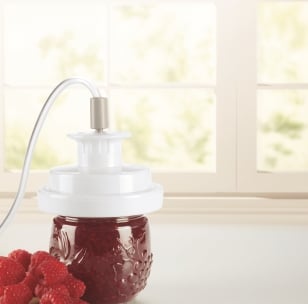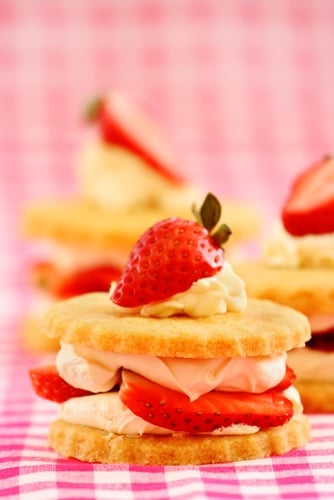
Using Your Jar Sealer
- Tips and How To's
- 11/19/14
- Share
Jam, flour, sugar, pasta - these foods can last a long time when properly stored, but often require more hands-on preservation methods to further extend their shelf life. Most can be sealed using your FoodSaver® 2-In-1 Vacuum Sealing Kit, which comes with bags, accessories and attachments that can keep your food fresh for much longer.
One of the best ways to preserve dry or powdery ingredients is by using your jar sealer, as this process not only benefits the contents, but makes storage much simpler as well. Break out your vacuum sealer and learn how to jar like one of the pros.
Storing, Sealing and Savoring Your Jars
To begin, set out a series of clean, empty jars on your counter. Using a permanent marker and piece of tape, label each jar with what you'll be placing in each. This allows for more efficient storage, while also giving you the ability to keep dry and wet ingredients separated when sealing.
Fill each jar with the ingredients of your choosing, but be sure to leave at least 1 inch of space at the top to prevent foods from getting sucked into the vacuum sealer. Place the flat part of the lid on the jar and attach your FoodSaver® Regular Jar Sealer, which will create an airtight lock for your ingredients, preventing harmful particles or critters from getting in your goods. Watch the jar sealing process illustrated in this video to get a more comprehensive understanding of the process.
Foods Well-Suited for Jars
Fruits, vegetables and meats are best for more conventional vacuum sealing storage, as they are likely going to be placed in the fridge or freezer until used. Those with naturally long shelf lives, however, are perfect for storing in jars. This method is great for dry ingredients that are used for baking, such as baking powder and soda, sugar, flour, brown sugar, cornstarch and graham cracker crumbs. There are many other dry goods that are ideally suited for jars, like pasta, beans, nuts, coffee grounds and cereal.
But dry foods are not the only ones that can be stored with these items. Jams, jellies and spreads should be sealed in jars, then placed in the pantry for long-term storage. This is ideal for those large batches of homemade jam you're planning to hand out over the holidays, as they can be sealed, stored and retrieved at any moment's notice. Don't forget to decorate your jars if you're going to repurpose them as presents!



